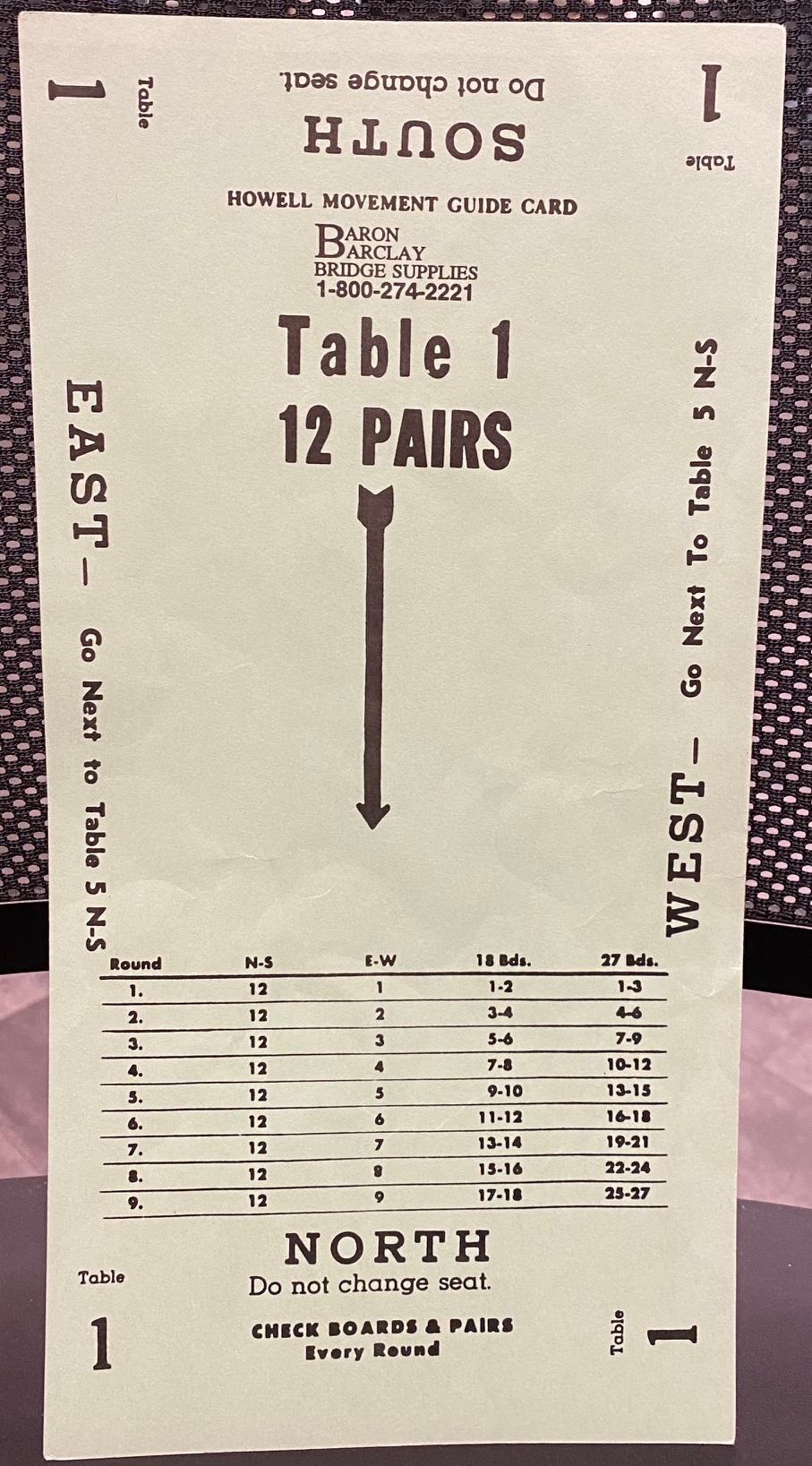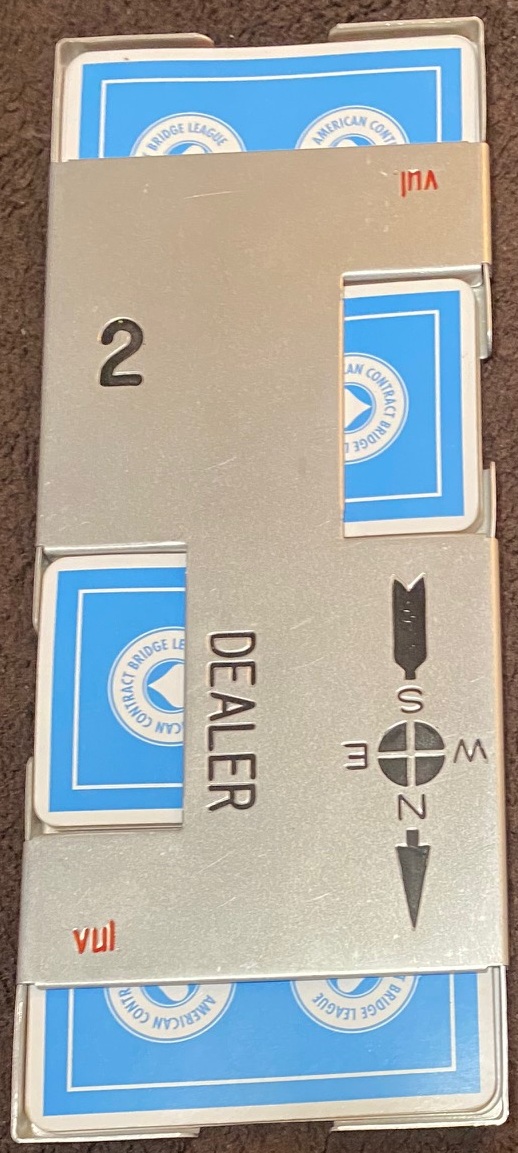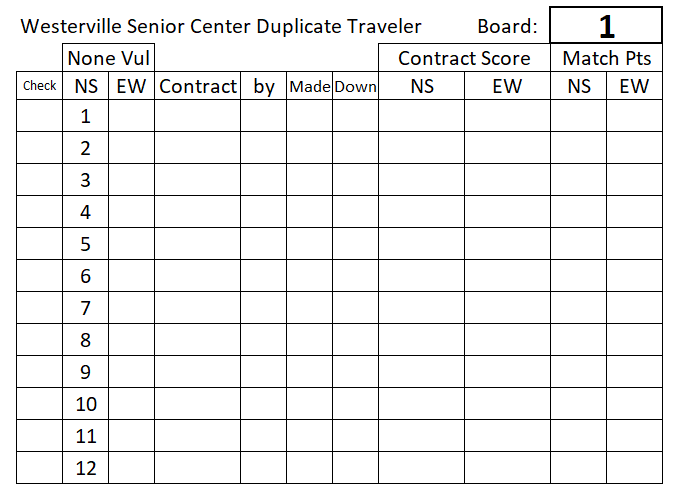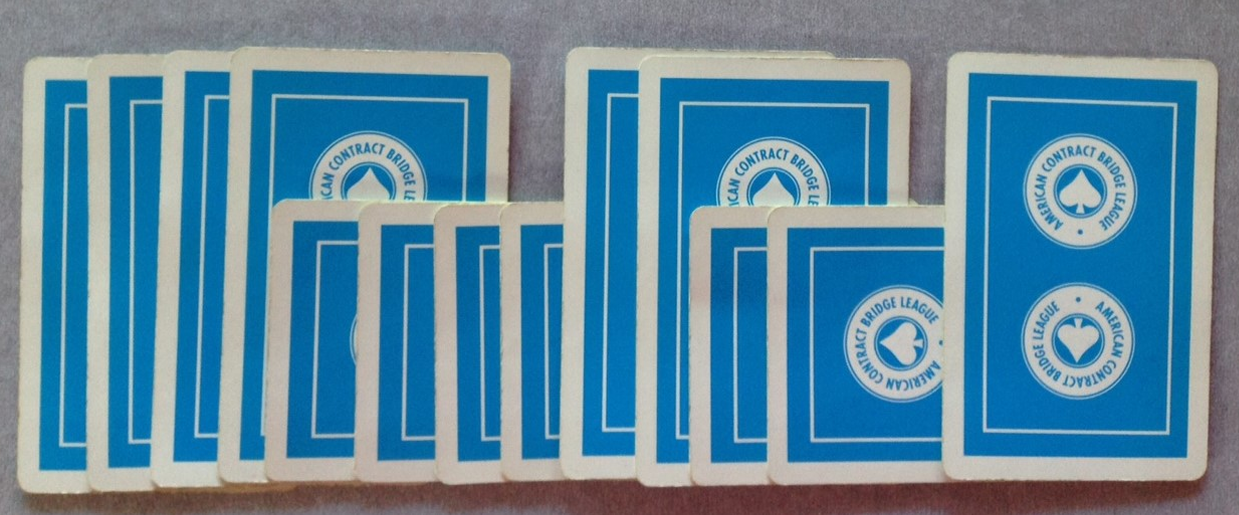Table Mat
One mat is placed at the center of each table.Each mat:
• is uniquely labelled with the table number.
• is aligned in the same North direction as all the other table mats.
• contains a unique table that displaysng which teams are playing, their direction, and the trays that will be used for each round.
• displays the table that each team will go after the end of the round.

Duplicate Tray
A stack of trays that are to be played for a specific round are placed on the mat at the center of each table.Each tray:
• is uniquely labelled with the tray number.
• displays the North direction and which teams are vulnerable.
• is aligned in the same North direction as all the other table mats and trays.
• contains four pockets of 13 playing cards each for each player at their respective compass direction seat.
• inicates which player is the "Dealer".

Traveller
The traveller is a tally sheet used to record the contract points at the end of each hand of duplicate bridge.This tally sheet "travels" with the tray as it moves from table to table.

Bidding Box
The bidding box contains 35 cards for each possible bid, plus several call cards (pass, double, and redouble). There are 4 bidding boxes at each table, positioned at each corner of the table for use by each player. The player uses these cards to make a bid or call during the bidding round without speaking.
Bidding Process
• The player opened with 1 club by placing the 1 club card face up on the table in front of the opener.
• (Not shown) Partner responded 1 spade.
• Opener bid 3 spades by placing the 3 spades card face up on top of the 1 club card so everyone can see the progression of bids.
• (Not shown) Partner bid 4 spades.
• Opener placed the PASS card face up on the 3 spades card so everyone can see the progression of bids.
• (Not shown) Partner responded 1 spade.
• Opener bid 3 spades by placing the 3 spades card face up on top of the 1 club card so everyone can see the progression of bids.
• (Not shown) Partner bid 4 spades.
• Opener placed the PASS card face up on the 3 spades card so everyone can see the progression of bids.

Trick Taking Process - the "Play"
• The playing cards are displayed in four columns by suit by alternating colors.
• The playing cards and columns are oriented for easy viewing by the declarer.
• When playing a trump suit contract, the left column of the dummy is the trump suit. (In this photo the trump suit is spades)
• When playing No Trump, the left column is the same suit that was first lead. (In this photo the suit that was led is spades)
• The playing cards and columns are oriented for easy viewing by the declarer.
• When playing a trump suit contract, the left column of the dummy is the trump suit. (In this photo the trump suit is spades)
• When playing No Trump, the left column is the same suit that was first lead. (In this photo the suit that was led is spades)

• won the first 4 tricks
• lost the next 4 tricks
• won the next 2 tricks
• lost the next 2 tricks
• won the final trick
This player (and his partner) won 7 tricks.
• lost the next 4 tricks
• won the next 2 tricks
• lost the next 2 tricks
• won the final trick
This player (and his partner) won 7 tricks.

• Both teams must agree on how many tricks were taken by each team.
• If the director is called to resolve a dispute, the hand integrity is intact and the director can review each playing card that was issued on each of the 13 tricks.
• If the director is called to resolve a dispute, the hand integrity is intact and the director can review each playing card that was issued on each of the 13 tricks.